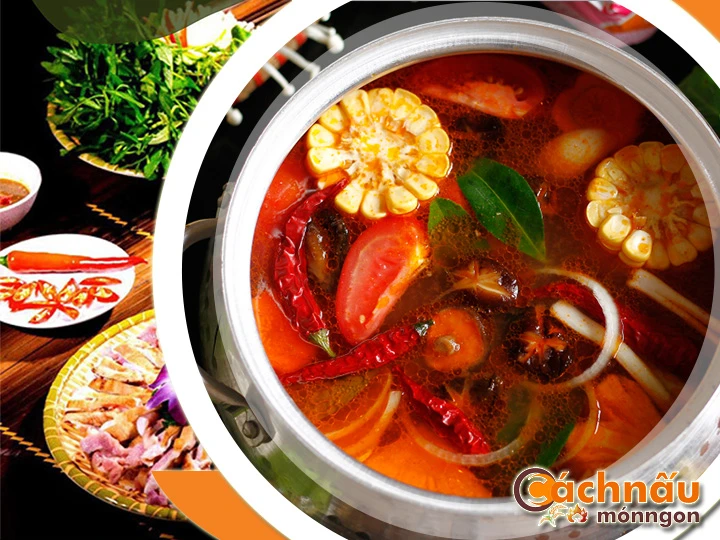Master the Authentic Rabbit Hot Pot Tips for Beginners - Lẩu thỏ
Hot pot rabbit, a
flavorful and
heritage-inspired recipe, has been
adored across
global culinary styles for centuries. 
This comprehensive guide explores the entirety you need to grasp about rabbit hot pot, from its ancient origins to current adaptations, wellness benefits, and comprehensive walkthrough for creating the top-tier meal at home. Whether you are a professional cook or a novice cook, this guide will inspire and equip you to excel in the technique of rabbit hot pot.
A CHRONICLES ALONG WITH CULTURAL ASPECTS CONCERNING {BRAISED RABBIT DISH|HEARTY RABBIT MEAL|RABBIT HOT POT|RABBIT STEW|BUNNY CASSEROLE|RABBIT CUISINE|STEWED RABBIT
Rabbit hot pot serves as a one-of-a-kind and traditional dish with meaningful cultural connections in different parts of the world. Its admiration stems not only from its savory flavor but also from its heritage and meaning.
Rabbit hot pot is a distinctive and traditional dish with profound traditions in diverse locales. Its admiration stems not only from its hearty flavor but also from its heritage and meaning.
- The History: Rabbit hot pot came from remote areas where these animals were a accessible, nutritious food source. In ancient times in China, it was a household staple, particularly during holidays.
- Widely Popularized: In the West like Belgium, rabbit was known for being part of broths, becoming modern versions of rabbit hot pot as the dish became internationally recognized.
2. Stewed Rabbit embedded in Eastern Heritage.
- In China: Known as Sichuan's rabbit hot pot delicacy, rabbit hot pot is popular in spicy Sichuan cuisine, renowned for its bold flavors and cherished at special celebrations.
- Throughout Korea and Japan: While relatively rare, rabbit hot pot is sometimes made as a therapeutic meal in Korea, or based on Japan’s nabemono-style cooking in Japan, combined with local produce and flavoring ingredients.
- Across Vietnam: Although rabbit hot pot is not widely consumed daily, it is appreciated during festive events or in rural areas where rabbit meat is plentiful. It is often seasoned with distinctive spices such as fresh lemongrass, zesty ginger, and spicy chili, paired with fresh vegetables like river spinach, mustard leaves, or sensitive plant. This dish is highly valued for its one-of-a-kind flavor and wholesome qualities, frequently prepared for family and friend reunions.
Trong văn hóa Việt Nam, tuy không thể xem là món ăn thịnh hành mỗi ngày, nhưng thường thấy trong những dịp đáng nhớ hoặc ở những nơi hẻo lánh, nơi nguồn thịt thỏ phong phú. Thường được nêm nếm bằng các loại gia vị như sả, hương vị gừng, và vị cay nồng của ớt, kết hợp với rau tươi bao gồm rau sống khác. Món ăn này rất phổ biến nhờ hương vị không trộn lẫn và tính bổ dưỡng, thường được thưởng thức tại những bữa ăn cùng người thân.
3. Rabbit Stew as part of Food Traditions in Europe.
- Within France: Traditionally served as a hearty stew with red wine, seasoning herbs like rosemary, and hearty vegetables. Rabbit hot pot is a cherished món lẩu thỏ recipe for celebratory occasions.
- Throughout Italy: The dish “Cacciatore”, featuring rabbit simmered with wine and tomatoes, is a precursor to hot pot-style rabbit dishes.
HOW TO COOK RABBIT HOT POT: RECIPES AND TECHNIQUES
Rabbit hot pot is a versatile dish that combines fresh ingredients, flavorful broths, and specialized methods to create a rich and delicious feast. Below are detailed insights into the core recipes and techniques to perfect rabbit hot pot.
The Fundamental Recipe for Rabbit Hot Pot
* Required Ingredients:
- 1 whole rabbit (sectioned)
- 4 cups of broth (bone broth)
- Vegetables (carrots)
- Spices and herbs (garlic)
- Seasonings (salt)
- Optional: rice for serving
* Steps:
- Prepare the Rabbit: Rinse and cut the rabbit into pieces. Marinate with salt, black pepper, and a splash of soy sauce for 30 minutes to enrich the flavor.
- Create the Broth: Heat a pot with a touch of oil. Cook garlic and ginger until golden. Add your preferred broth and bring it to a boil.
- Add the Rabbit: Add the rabbit pieces into the pot and let them simmer on low heat for 30-40 minutes until soft.
- Include the Veggies: Add your preferred vegetables and cook until they are tender but still bright.
- Serve: Transfer the hot pot to a portable stove. Serve with accompaniments and side options like rice or noodles.
Mastering Rabbit Hot Pot Techniques
- Marination:
. Marinate the rabbit with a mixture of salt, pepper, and seasonings to amplify its original taste.
. For more complexity, use soy sauce or a mix of herbs such as rosemary and thyme.
- Adding Ingredients Strategically:
. Start by boiling the rabbit in the broth to release its savory taste.
. Layer vegetables strategically based on their texture needs.
- Optimal Cooking Duration:
. Avoid letting it dry out the rabbit, as it can lose tenderness.
. Test for doneness by checking if the meat easily separates from the bone.
- Taste Customization:
. Adjust the broth by adding more spices as needed.
. Experiment with different flavor profiles, such as creamy European-inspired variations.
Secrets to a Perfect Rabbit Hot Pot
- Fresh Ingredients: Always choose high-quality rabbit and farm-fresh produce for the best results.
- Taste and Adjust: Be attentive of the saltiness in the broth. Try and tweak frequently during cooking.
- Sauce Pairings: Offer a selection of sauces like sesame paste or savory soy mixes to elevate the dining experience.
- Presentation: Use a tabletop cooker or serve the hot pot as a focal point to encourage communal dining.
By perfecting these methods and recipes, you can prepare a rabbit hot pot that’s tasty and beautifully presented, making it a highlight for any gathering or dining experience.
